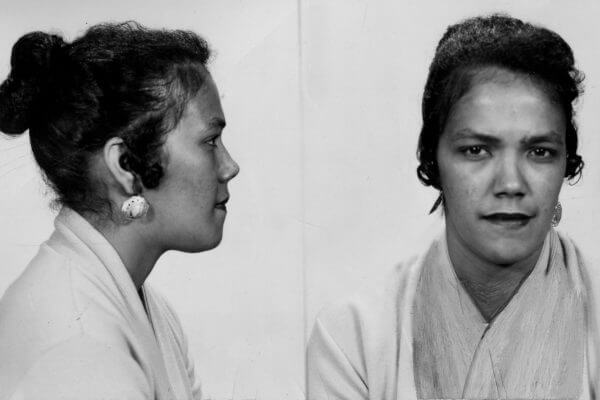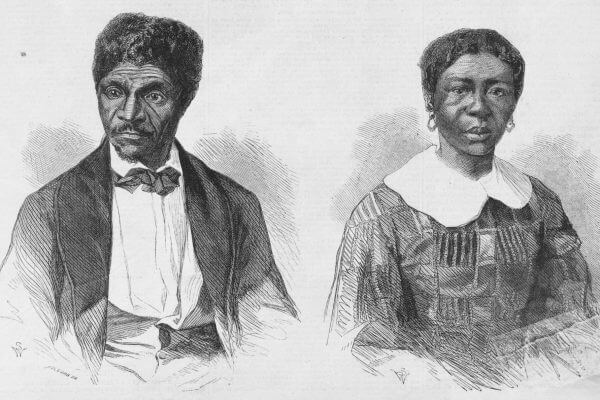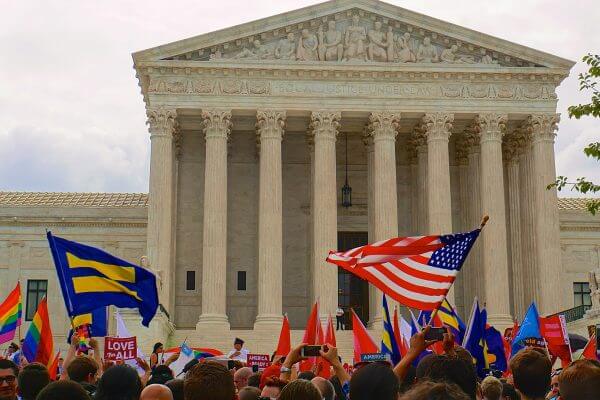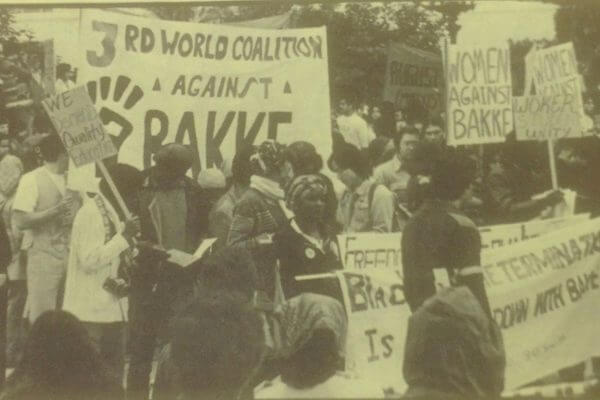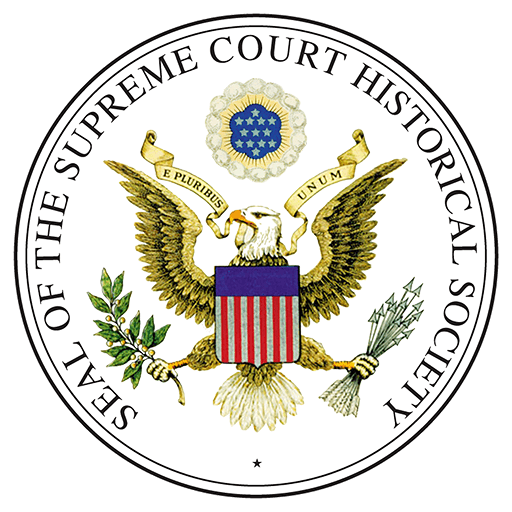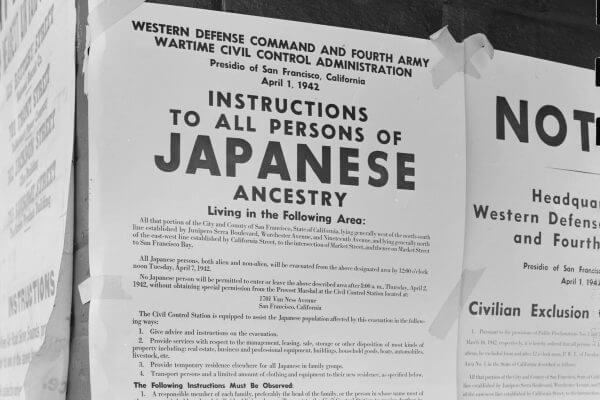
Korematsu v. United States (1944)
Japanese American Internment During World War II was Constitutional
Exclusion Order posted at First and Front Streets directing removal of persons of Japanese ancestry from the first San Francisco section to be effected by the evacuation.
Photo Credit: Dorothea Lange, Public domain, via Wikimedia Commons
Overview
After Pearl Harbor was bombed in December 1941, the military feared a Japanese attack on the U.S. mainland. The U.S. government was worried that Americans of Japanese descent might aid the enemy. In 1942, President Franklin D. Roosevelt signed an executive order forcing many people of Japanese descent living on the West Coast to leave their homes and businesses and live in internment camps for the duration of the war. Fred Korematsu, an American citizen of Japanese descent, was arrested and convicted of violating the executive order. Korematsu did not believe his arrest was fair. He challenged his conviction in the courts saying that Congress, the president, and the military authorities did not have the power to issue the relocation orders, and that he was being discriminated against based on his race. The government argued that the evacuation was necessary to protect national security. The federal Appeals Court agreed with the government. Korematsu appealed to the U.S. Supreme Court. The Court agreed with government and stated that the need to protect the country was a greater priority than the individual rights of the people of Japanese descent forced into internment camps.

Exclusion Order posted at First and Front Streets directing removal of persons of Japanese ancestry from the first San Francisco section to be effected by the evacuation.
Photo Credit: Dorothea Lange, Public domain, via Wikimedia Commons
"Citizenship has its responsibilities as well as its privileges, and in time of war the burden is always heavier. Compulsory exclusion of large groups of citizens from their homes, except under circumstances of direst emergency and peril, is inconsistent with our basic governmental institutions. But when under conditions of modern warfare our shores are threatened by hostile forces, the power to protect must be commensurate with the threatened danger."
- Justice Hugo Black, speaking for the majority
Learning About Korematsu v. United States
Students
This section is for students. Use the links below to download classroom-ready .PDFs of case resources and activities.
About the Case
Full Case Summaries
A thorough summary of case facts, issues, relevant constitutional provisions/statutes/precedents, arguments for each side, decision, and case impact.
Case Background and Vocabulary
Important background information and related vocabulary terms.
Learning Activities
Teachers
Use the links below to access:
- student versions of the activities in .PDF and Word formats
- how to differentiate and adapt the materials
- how to scaffold the activities
- how to extend the activities
- technology suggestions
- answers to select activities
(Learn more about Street Law's commitment and approach to a quality curriculum.)
About the Case
- Full Case Summaries: A summary of case facts, issues, relevant constitutional provisions/statutes/precedents, arguments for each side, decision, and impact. Available at high school and middle school levels.
- Case Background: Background information at three reading levels.
- Case Vocabulary: Important related vocabulary terms at two reading levels.
- Diagram of How the Case Moved Through the Court System
- Case Summary Graphic Organizer
- Case Summary Graphic Organizer - Fillable
- Decision: A summary of the decision and key excerpts from the opinion(s)
Learning Activities
Teacher Resources
Teaching Strategies Used
Planning Time and Activities
If you have ONE day...
- Read the background summary (•••, ••, •) and answer the questions.
- Complete the Classifying Arguments Activity. Discuss which arguments the students find most convincing. You may choose to do the Anatomy of a Case Activity to simplify.
- For homework, have students read the Key Excerpts from the Majority Opinion and Key Excerpts from the Dissenting Opinion and answer the questions. Follow up the next day by reviewing the questions with students.
If you have TWO days...
- Complete all activities for the first day (excluding the homework)
- Complete Document Analysis: Executive Order 9066
- Complete the Cartoon Analysis Activity.
- For homework, have students read the Key Excerpts from the Majority Opinion and Key Excerpts from the Dissenting Opinion and answer the questions. Follow up the next day by reviewing the questions with students.
If you have THREE days...
- Do all of the activities recommended for days one and two (including homework).
- Complete Photograph Analysis Activity or Primary Source Analysis Activity.
- Complete and discuss the A Question of Loyalty activity.
- Complete the Presidential Powers in Wartime (•••) activity.
If you have FOUR days...
- Do all of the activities recommended for days one, two, and three.
- Complete Did the Court Err in Korematsu?
- Complete Congressional Gold Medal Celebration Invitation project.
Glossary
These are terms you will encounter during your study of Korematsu v. United States. View all Glossary terms here.
Related Cases
Legal Concepts
- These are legal concepts seen in Korematsu v. United States. Click a legal concept for an explanation and a list of other cases where it can be seen. View all Legal Concepts here.


